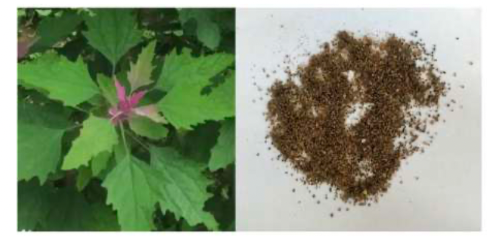


Journal of Pharmaceutical Research
Year: 2022, Volume: 21, Issue: 2, Pages: 48-54
Original Article
Shailin Dkhar ✉ 1 , E Akila 1 , V B Narayana Swamy 1 , N Pruthvi 1
1 Department of Pharmacognosy, R R College of Pharmacy, Bangalore, Karnataka, 560090, India.
Corresponding author ✉: [email protected]
In the present research, the Histological examination, physiological evaluation, phytochemical screening, total phenolic content and total flavonoid content and TLC of leaf extracts of Chenopodium giganteum have been studied. Ethanol, aqueous, chloroform, and pet ether extracts of Chenopodium giganteum was prepared. Phytochemical screening shows presence of carbohydrates, proteins, amino acids, glycosides like saponin and flavonoids, tannins, phenols, alkaloids, and steroids. The physiological evaluation shows total ash 15.12% w/w and acid insoluble ash value 7.46%w/w, loss of drying was found to be 8.1% w/w, extractive value of pet ether extract was found to be 2.3% w/w, chloroform extract 4.5% w/w, ethanol extract 7.2% w/w and water 10.2% w/w. The total flavonoid content of pet ether extract was found to be 17.2227±0.0729 µg/ml, chloroform extract 23.7224±0.0878 µg/ml, ethanol extract 49.8601±0.0303 µg/ml and water extract 64.7705±0.0375 µg/ml. The total phenolic content of pet ether extract was found to be 14.477±0.0226 µg/ml, chloroform extract 17.764±0.0216 µg/ml, ethanol extract 19.518±0.0173 µg/ml and water extract 27.686±0.0233 µg/ml. TLC of pet ether extract shows constituents having Rf values 0.548, 0.274, 0.1935, and 0.080, chloroform extract shows constituents having Rf values 0.765, 0.656, 0.468, 0.234, and 0.156, ethanol extract shows constituents having Rf values 0.815 and 0.584, and water extract shows constituents having Rf values 0.704 and 0.064.
Keywords: Histological examination, physiological evaluation, phytochemical screening, Chenopodium giganteum
© 2022 Published by Krupanidhi Educational Trust. This is an open-access article under the CC BY license (https://creativecommons.org/licenses/by/4.0/)
Subscribe now for latest articles and news.